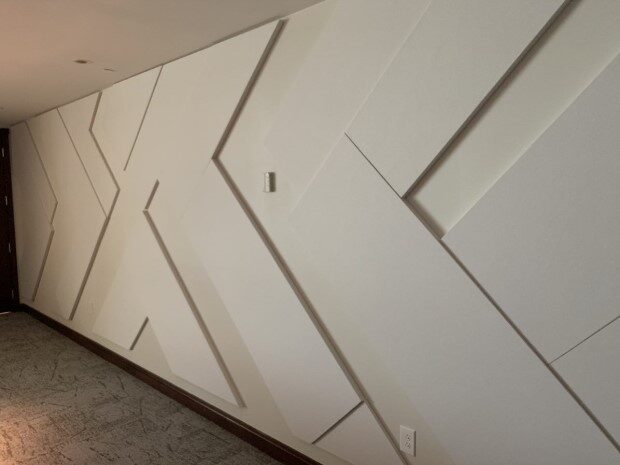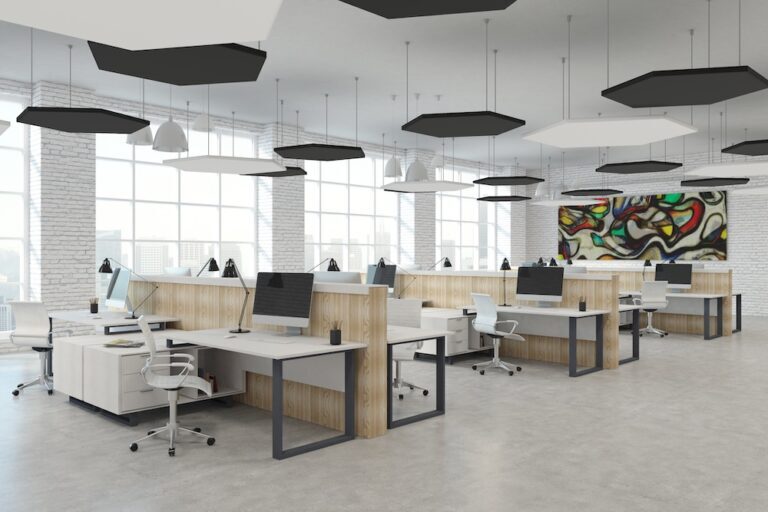Are Architects and Designers Listening? Prioritizing Sound Design to Minimize Loss of Business and Maximize Profitability
- 5 min read
- March 7, 2024
While sitting in a beautiful new bar and restaurant, my friend, a musician and fellow podcaster, leaned in and asked, “Are architects deaf?” His question was based on his experiences of visiting numerous restaurants that were extremely loud, creating a stressful and unpleasant customer experience.
Even the cozy-looking spaces that looked like a private nook had a huge speaker blasting as if we were in a bar. Despite having amazing zones and spaces, my friend pointed out that there was a diversity of seating areas, but no diversity of sound.
One often-overlooked element that can have a significant impact on customer satisfaction is sound design. Poor sound design can lead to customer discomfort, dissatisfaction, and reduced business. In this article, we will explore the importance of soundproofing in architecture and design and provide effective solutions to help businesses minimize loss and maximize profitability.
Looking from the past
In the 1920s and 1930s, restaurants commonly featured dedicated phone booths for customers, often near the entrance and decorated to match the décor. These booths provided a private space for making calls, particularly important for people with businesses to conduct calls without disturbing other colleagues or clients.
While fewer in number today, phone booths are still found in some restaurants, but they are no longer as common as they once were. The rise of mobile phones has made them less necessary, and many restaurants have chosen to remove them in order to save space. However, there are still some restaurants that see phone booths as a valuable asset, and they continue to offer them to their customers.
So why did telephone booths exist in restaurants in the first place?
Restaurants, being social hubs, provided an ideal setting for telephone booths. In fact, restaurants have become so loud, that it is the second most common complaint amongst restaurant goers behind poor service.
Effects of Noise Pollution
The sound around us is affecting us even though we’re not conscious of it. From city streets, from the workplace to our homes, sound surrounds us, shaping our experiences and influencing our moods, productivity, and overall well-being.
In recent years, noise pollution has become a major concern in public spaces, and restaurants are no exception. A 2018 survey shows that 25 percent of New York restaurants hit 81 decibels. This exceeds the recommended average of 70 decibels, with prolonged exposure posing potential risks to one’s hearing health. The impact of noise does not only affect discomfort and hearing. Research indicates that our dining environment significantly influences our perception of food flavors and tastes.
Poor sound design can have its consequences in business. When customers enter a business, they expect a comfortable and enjoyable environment. However, when your customers feel uncomfortable and dissatisfied, this can lead to negative customer experiences, reduced customer retention, and ultimately, lost business. Employees working in loud environments are often most affected, thus can also result in increased turnover. Employees are more likely to leave their jobs in search of a more conducive work environment.
Individuals with disabilities are frequently disproportionately impacted by poor sound design. For instance, for those with autism, loud or sudden noises can be overwhelming, potentially leading to anxiety or meltdowns. People suffering from tinnitus often endure a persistent ringing or buzzing in their ears, which can worsen in loud or chaotic surroundings. Certain mental health conditions, like PTSD or anxiety, can cause heightened sensitivity to noise, making individuals more prone to adverse reactions from loud or unexpected sounds.
Design Strategies
Architects and designers can take steps to mitigate these risks and create pleasing spaces that enhance customer experience, boost employee productivity, and protect privacy. Here are design strategies that can help your business reduce noise.
1. Diversity of Spaces: The opposite end of the spectrum is not ideal either; an overly quiet environment can detract the ambiance, particularly in the restaurant and hospitality sectors. The goal is not to eliminate the sound entirely, but rather to minimize its effect, making it less noticeable. Designing spaces that can accommodate different activities and noise levels can create more comfortable environments for different users.
2. Wall Acoustic Treatment: These materials help to absorb sound waves and reduce their intensity, creating a more peaceful and comfortable environment. These materials mitigate echo and reverberation, facilitating clearer speech comprehension and music appreciation.
Audimute is a company that specializes in acoustic solutions for a variety of environments. They offer a wide range of wall acoustic treatment products, including acoustic panels, curtains, and baffles.

3. Acoustic Ceiling Clouds: Absorptive spaces don’t have to be limited to walls. Ceiling clouds are a type of acoustic panel that is designed to hang from the ceiling. They are made from a variety of materials, including acoustic foam, fabric, and wood. They are often used in commercial settings, such as offices, classrooms, and auditoriums.
If you are looking for a way to reduce noise in your home or office, NetWell can help you choose the right ceiling clouds for your needs and ensure that they are installed properly.

4. Soundproof Doors & Windows: Doors and windows are often the weakest links in a soundproofing system. Installing soundproof doors and windows can minimize noise from outside sources. Heavy soundproof curtains or blinds can also be installed on windows and doors to block external noise and prevent sound from escaping. They are particularly beneficial for rooms that require a high level of privacy or are located in noisy areas.
Acoustical Solutions offers a variety of doors and windows soundproofing, including doors made from thick, dense materials that block sound waves and windows made from thick, insulated glass that also blocks sound waves.

5. Adding Natural Elements: Incorporating natural elements like plants and water features can also absorb and deflect sound. Plants and water features can help create a more natural and relaxing environment, while also absorbing sound waves and reducing noise levels. This approach can be particularly effective in open-plan offices or large public spaces where noise control is a challenge.
If your restaurant gets too noisy, it’s time to find better ways to control the sound. By addressing the often-neglected aspect of sound design, businesses can elevate their operations, maximize profitability, and create spaces that cater to the well-being of both customers and employees.
Parting thoughts
Like an attentive listener, architects need to design with the best human experience in mind. This involves considering all five senses: touch, taste, hearing, smell, and sight.
Investing in good design is key to enhancing profitability and business growth- therefore, we must take a holistic approach when designing, considering every aspect of the environment. Spaces that cater to everyone’s needs, including individuals with disabilities, significantly influence customer perceptions and consumer behavior. This includes minimizing noise pollution to create a more inclusive environment.
Designers often allocate a significant portion of their budgets to aesthetics, which can sometimes overshadow comfort. There are cases where comfort may be unintentionally neglected or overlooked, despite its equal, if not greater, importance in the design process.
In conclusion, an accomplished designer is not just mindful of aesthetics, but also acutely aware of the sensory experiences their designs create. By taking a holistic approach that prioritizes comfort and inclusivity, designers can positively impact user experiences. This includes addressing noise pollution, which is a critical element often overlooked. Therefore, designers must be akin to attentive listeners, carefully observing and responding to the needs of their environment, to create spaces that truly enhance human experience.
Was this insightful? Give a thumbs up or post a comment.
For more of our blogs, check out https://mgsglobalgroup.com/blog/.




